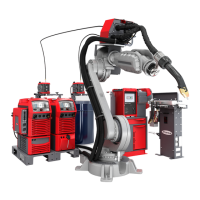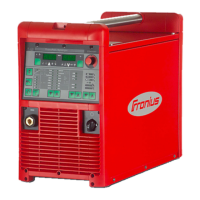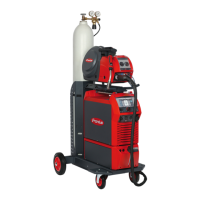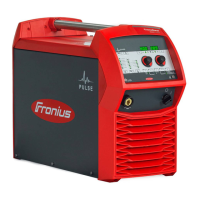11
EN
Protecting your-
self and others
Anyone working with the device exposes themselves to numerous risks, e.g.
- flying sparks and hot pieces of metal
- Arc radiation, which can damage eyes and skin
- Hazardous electromagnetic fields, which can endanger the lives of those using cardi-
ac pacemakers
- Risk of electrocution from mains current and welding current
- Greater noise pollution
- Harmful welding fumes and gases
Suitable protective clothing must be worn when working with the device. The protective
clothing must have the following properties:
- Flame-resistant
- Insulating and dry
- Covers the whole body, is undamaged and in good condition
- Safety helmet
- Trousers with no turn-ups
Protective clothing refers to a variety of different items. Operators should:
- Protect eyes and face from UV rays, heat and sparks using a protective visor and reg-
ulation filter
- Wear regulation protective goggles with side protection behind the protective visor
- Wear stout footwear that provides insulation even in wet conditions
- Protect the hands with suitable gloves (electrically insulated and providing protection
against heat)
- Wear ear protection to reduce the harmful effects of noise and to prevent injury
Keep all persons, especially children, out of the working area while any devices are in op-
eration or welding is in progress. If, however, there are people in the vicinity:
- Make them aware of all the dangers (risk of dazzling by the arc, injury from flying
sparks, harmful welding fumes, noise, possible risks from mains current and welding
current, etc.)
- Provide suitable protective equipment
- Alternatively, erect suitable safety screens/curtains.
Danger from toxic
gases and va-
pours
The fumes produced during welding contain harmful gases and vapours.
Welding fumes contain substances that may, under certain circumstances, cause birth de-
fects or cancer.
Keep your face away from welding fumes and gases.
Fumes and hazardous gases
- must not be breathed in
- must be extracted from the working area using appropriate methods.
Ensure an adequate supply of fresh air with a ventilation rate of at least 20 m³/hour.
Otherwise, a protective mask with an air supply must be worn.
Close the shielding gas cylinder valve or main gas supply if no welding is taking place.
If there is any doubt about whether the extraction capacity is sufficient, the measured toxic
emission values should be compared with the permissible limit values.
Amongst others, the following components are responsible for the degree of toxicity of
welding fumes:
- Metals used for the workpiece
- Electrodes
- Coatings
- Cleaners, degreasers, etc.
The relevant material safety data sheets and manufacturer's specifications for the listed
components should therefore be studied carefully.
Flammable vapours (e.g. solvent fumes) should be kept away from the arc's radiation area.
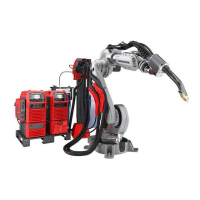
